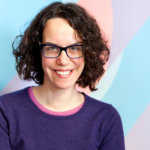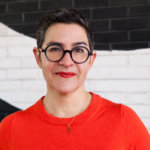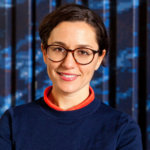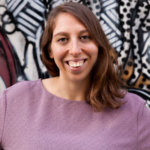Is your community an Open Community?
Here at the Duck Call, we’re happy to participate in the virtual book tour Maddie Grant and Lindy Dreyer are doing to explore concepts from Open Community: a little book of big ideas for associations navigating the social web. In this post, Maddie and Lindy answer a few questions for our readers.
How would you describe Open Community in 140 characters or less?
Love it! “A practical ‘little book of big ideas’ for organizations interested in how to find, nurture and grow their community online.”
Why did you write your book, Open Community?
We come from the association industry and for many of us “membership” people, community is old hat. It’s what we do. It’s central to our work. And yet, for some reason (actually a lot of reasons) what we know about community isn’t always translating well to building community online. We have talked to thousands of association executives who have voiced their frustrations about the social web–from the overabundance of tools and the disorderly experimentation of staff and members, to the lack of organizational support and the unwieldy processes for monitoring and managing social media, and that’s just the beginning. It’s easy to get bogged down in the newness and the detail, and miss the bigger picture–not the 10,000-foot bigger picture, but the “just high enough to make practical sense” bigger picture.
So we started writing the book, and the idea that kept popping up is the concept of Open Community. Here’s the gist. Your Open Community is your people who are bonded by what your organization represents and care enough to talk to each other (hopefully about you!) online.
Is this book just for people who work in associations? Who else should read it?
The book is written specifically for people who work in membership organizations, simply because that is the industry we come from, but there are many organizations and for-profit companies that have a “membership” model that will find the ideas in the book extremely useful. Members are basically stakeholders – as are volunteers, donors, evangelists, Fiskateers, Ambassadors, any number of other groups of people invested in an organization – and we’d love to test our ideas on all kinds of organizations.
You describe this book as a ‘conversation starter’. Where should people go to continue the conversation?
We have a book website at www.opencommunitybook.com. We’ll be posting lots of ideas from the book for deeper discussion on our blog and aggregating all the case studies we find here. We encourage anyone to contact us with any stories of how you are nurturing your open communities, if you’d like to be showcased as a case study. For more open-ended or informal questions and comments, we also have an Open Community Facebook page and definitely welcome feedback there too.
One of the chapters of your book is dedicated to developing a “social organization”. How is that concept the same or different to what Beth Kanter’s and Allison Fine’s concept of a “networked nonprofit”?
Actually our concept of a social organization is very similar to that of a networked nonprofit (we’re in full agreement with Beth and Allison!) but we approached the idea from the inside out as opposed to the outside in. Beth and Allison describe the networked nonprofit as being like a social network interlinked other networks as well as free agents (individuals); with particular qualities that make up its social culture (transparency, relationship-building, etc.). When we talk about the social organization, we start with exploring individual behaviors and skill sets, then internal processes such as community management, establishing good social media policies, the role of staff in building relationships online… and then we look at cultural issues of openness, collaboration, decentralization. Both books go very well together, actually, and Beth was kind enough to review an early version of Open Community for us while we were editing it!
Many nonprofits struggle with deciding where to build their online community, say on an existing platform like Facebook or on a customizable platform like Ning. Any advice for those in that position?
Absolutely. Open Community (the book) is all about how to find your open community (your people). We describe how an open community exists in all kinds of places around an organization – the ecosystem – and the decision of where to build your own will depend entirely on where your stakeholders are already hanging out online and what their needs might be. Most importantly, we make the distinction between a homebase (your own official space or spaces) and outposts (public spaces like Facebook, LinkedIn, Twitter) and how they relate to each other and happily coexist.
In workshops and webinars on social media, participants almost always ask me about staffing? About how much time do you think it takes to build an online community?
It takes as much time as you will give it – and the more you can give it, the better, especially in the very beginning when it will need a LOT of tending and watering (so to speak). We run our own community (Young Association Professionals at yapstar.org) and we started it with 10 friends on Facebook; it’s grown to over 1,100 members in three years. There are times when building a community is a full time job; there are other times when it will percolate along nicely without you having to do much at all. The key is to make it awesome enough so that you have champions within the community who can eventually help you with some of the time consuming stuff. Building community is an art, more than a science, and every group will be different. The book contains a lot of ideas that should help, though!
What is the most unexpected reaction you have received to your book so far?
Well, this is our first book, so technically we had no idea what to expect! But we have received some amazing feedback so far and it’s only been out for two weeks. We went against the grain, though, by designing the book to be small enough to carry around all day, short enough to read on an airplane, and completely devoid of case studies, because we wanted everyone to immediately start thinking about how the ideas might apply to their own organization… and so far we have had several comments saying the book is “meaty from the very first page”. Which is awesome!
What is the #1 thing you hope readers take away from Open Community?
That your open community is already out there online – you just need to find your people where they already are, and start getting to know them and they will help you flourish.
::::
Are you trying to find and build community online? Share your successes, failures, and ideas here. You can even ask Maddie and Lindy a question and we’ll be sure they come back to answer.





